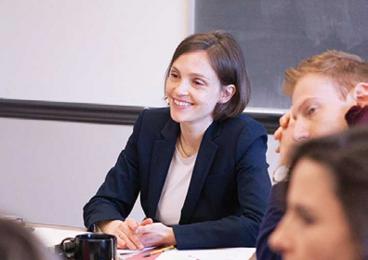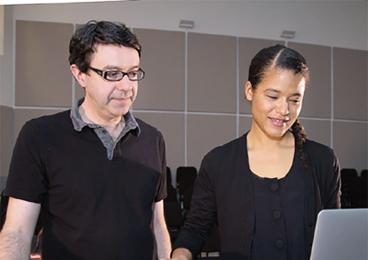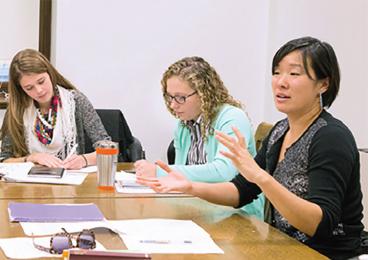I was thrilled when Deborah Prentice agreed to become dean of the faculty two years ago — her job is a challenging one, and she does it superbly. I have invited Dean Prentice to share her philosophy and perspective on the development of the University faculty. — C.L.E.



Most new faculty members recruited to Princeton each year are assistant professors beginning their first tenure-track appointments. They are highly educated and highly trained, with on average almost a decade of graduate school and postdoctoral work under their belts. Most have been trained in multiple fields; interdisciplinarity is now the norm. Assistant professors bring to campus new fields of study, new research and teaching methodologies, new ideas, and best of all, new energy. They are the future of their academic fields and of progress in knowledge creation more generally. We recognize them as our next generation of faculty leaders, the future of the University’s teaching and research mission.
This view of assistant professors is very different from the view held just two decades ago. Many faculty on campus, myself included, remember a time when assistant professors were viewed much more skeptically — when they were put through a set of paces designed to determine whether they were good enough to join the tenured ranks. Those paces included teaching the toughest courses, shouldering the heaviest advising loads, and taking on the committee work that nobody else wanted to do. Assistant professors who accomplished all of this and also did enough research to establish their scholarly reputations were deemed tenure-worthy. Not surprisingly, tenure rates were low, and most assistant professors came to Princeton expecting to leave after a few years. This expectation was reinforced by the University’s leadership. As Professor Mike Jennings of the German department tells it, when he came to Princeton in 1981, Dean of the Faculty Aaron Lemonick met with the incoming assistant professors as a group. “Look to your left; look to your right,” he told them. “Only one of you will still be here in seven years.”
Now, assistant professors are recruited — and treated — with the expectation they will succeed. They teach a regular load of courses appropriate to their areas of interest and expertise and advise a manageable number of undergraduate and graduate students who share their scholarly proclivities. They receive start-up resources that help them launch their research programs and sabbatical leave time to bring research projects to fruition. Although expectations for committee work and other forms of University service are low, many assistant professors contribute to the University in important ways and receive recognition for their efforts. The tenure bar at Princeton is as high as ever — perhaps even higher, given the increasing level of competition in the academic marketplace — but now more assistant professors clear the bar: Approximately 50 percent of the assistant professors who join the faculty this fall will eventually be promoted to the tenured ranks, compared with 30 percent in the 1980s and 1990s and 20 percent in the 1960s and 1970s.
An analysis of the causes of this change in the University’s view of assistant professors would require another President’s Page at least: The intensification of graduate training and growing prominence of postdoctoral fellowships, the segmentation of the academic job market, the escalating costs of research, and the immobility produced by dual-career family structures have all played a role. These trends and many others have shifted the process of building a faculty away from the pursuit of senior faculty stars and toward the careful selection, recruitment, and development of assistant professors. Importantly, this change is not a Princeton phenomenon; all of our peer institutions have undergone a similar shift over the same period of time. Indeed, in the last decade, both Harvard and Yale created a tenure track in response to their need to promote faculty members to tenured positions from within the university.
Princeton is now among the very best places for new assistant professors to begin their academic careers. I am proud of this distinction and am confident that it serves the University well. So as we come over the crest this April and see the remarkable group of assistant professors who will join us in September, I know the University is in good hands.
